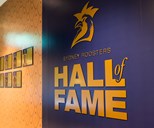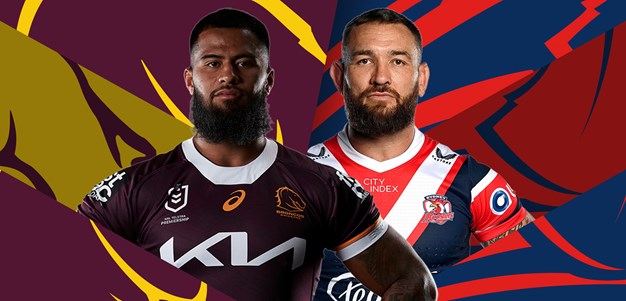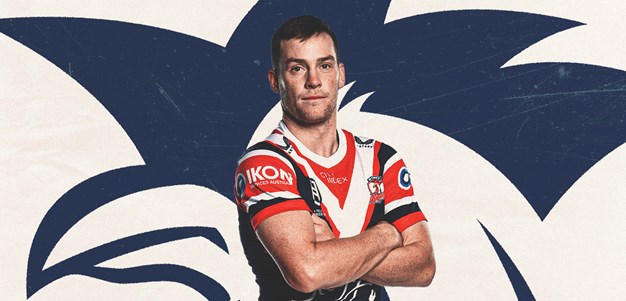
The Sydney Roosters Hall of Fame Selection Committee has endorsed an Induction Voting Shortlist of 24 candidates as the Club prepares to elevate new members into the prestigious Hall of Fame on Friday, August 4.
Twelve people have been selected from each Era, with the Selection Committee now working to determine which six should join the existing nine Inductees in the Hall of Fame.
Each Committee Member will be asked to vote on each Era from six to one, with six votes being for the Inductee who they deem most worthy.
The top two people who have accumulated the most votes from each Era will automatically be inducted into the Hall of Fame. The Committee will then reconvene and be informed of the four inductees, before unanimously deciding on the final two inductees from either Era.
Who Will Be Next?
Era 1: 1908 – 1946
To be eligible for selection for Era 1, players must have featured in a minimum of 50 First Grade games for Easts between 1908 and 1946.
Daniel O’Connell Frawley
Dan Frawley, Sydney Rooster #5 pioneered the position of winger during the first decade of Australian Rugby League.
Converting from Rugby Union alongside Dally Messenger, the pair developed an unstoppable connection to carry Easts to three consecutive Premierships in 1911, 1912 and 1913.
In his 71 first grade games for the Eastern Suburbs, Frawley scored 56 tries and kicked 20 goals, proving his value as a fleet-footed flyer who was dominant with ball in hand.
Frawley played a total of eight seasons for the Tricolours from 1908-1915 and was inducted into the National Rugby League’s Hall of Fame in 2008.
Lawrence ‘Jersey’ O’Malley
Larry O’Malley, Sydney Rooster #9, was regarded as a workhorse with a ‘no-nonsense’ attitude.
He played a total of 53 first grade games for the Club from 1908-1914, starring in the 1911, 1912 and 1913 Premiership campaigns as a dominant backrower before retiring in 1914 to focus on his career as a referee.
Sidney Charles ‘Sandy’ Pearce
Sid ‘Sandy’ Pearce, Sydney Rooster #10 was known as the ‘Prince of Hookers’ and seen by many as one of the most durable forwards to have played the game in the 20th century.
The three-time Premiership winner played 157 games for Easts from 1908-1921 and retired from rugby league as the game’s most capped player.
As the code and Club celebrated their centenary, Pearce was honoured with selection into the Sydney Roosters Team of the Century (2000), Australian Rugby League Hall of Fame (2005), International Rugby League Hall of Fame (2005), Sydney Roosters Centurions (2007) and Australian Rugby League’s 100 Greatest Players (2008).
Arthur James ‘Pony’ Halloway - Coach
Arthur ‘Pony’ Halloway, Sydney Rooster #61, was an opportunistic halfback who played a total of 36 games for Easts, having a hand in the Club’s 1912 and 1913 titles before switching to a coaching role.
Following a seven-year hiatus from the Country’s first grade competition, Halloway would return to Easts in 1930, taking charge of the Club in an effort to bring them more success.
Known to never harp on faults or overpraise cleverness, Halloway coached 154 games for Easts across four stints at the Club, most notably steering the Tricolours to Premiership victories in 1935, 1936, 1937 and 1945.
He was inducted into the Australian Rugby League Hall of Fame in 2008 and was recognised in Australian Rugby League’s 100 Greatest Players (2008).
Secure your seat for the Sydney Roosters Hall of Fame Induction now!
Jack Cosgrove ‘Bluey’ Watkins
Jack ‘Bluey’ Watkins made his debut as Sydney Rooster #66 in 1913, scoring a try in his first appearance. Recognised for his strong cover defence, the backrower would assist in obtaining the Club’s third consecutive Premiership in the same year.
Watkins played 112 first grade games for the Tricolours, taking home another Premiership in 1923 before Captaining the Club in his final season (1926).
Regarded by the English Press as one of the finest lock forwards to have visited their country for the 1921-1922 Kangaroos Tour, Watkins was recognised in the Sydney Roosters Team of the 20th Century on the interchange bench.
Leslie Clyde ‘Boxhead’ Cubitt
Les Cubitt joined the Eastern Suburbs in 1913, making his debut as Sydney Rooster #67. Known for his attacking prowess as an agile speedster the centre/five-eighth played a total of 93 first grade games in the Red, White and Blue.
Cubitt partnered Arthur ‘Pony’ Halloway in the halves in the 1913 Grand Final at the Sydney Cricket Ground, helping Easts claim the Premiership over South Sydney in front of 25,000 people.
Journalist Claude Corbett described Cubitt as the ‘brainiest footballer the League has had’ at the beginning of the 1914 season. He was inducted into the Australian Rugby League Hall of Fame in 2008.
Henry Joseph Caples
Harry Caples, Sydney Rooster #86, was a dominant five-eighth who enjoyed running the ball. He played 103 first grade games for the Club between 1916 and 1923, before returning for three appearances in 1929.
Caples played an integral role in Easts 1923 Premiership campaign, scoring two tries in the decider to down South Sydney 15-12.
Following the Premiership success, he moved to Victoria to help organise Rugby League in the southern states, eventually returning to Easts for one last season in 1929.
Sidney Henry William ‘Joe’ Pearce Jnr
Son of Sandy Pearce, Sydney Rooster #193 - Sid ‘Joe’ Pearce - started his career as a fullback with Easts in 1929, but quickly found a home amongst the forward pack.
Recognised for his outstanding ball-playing ability, Pearce featured in 147 first grade games for the Club from 1929-1942, claiming Premierships in 1935, 1936, 1937 and 1940.
After battling with injuries, Pearce retired from playing to take up a coaching role at Easts in 1942. He coached 44 total games across three years, most notably leading the Club to the Grand Final in his first season as Coach.
Pearce was recognised in the Sydney Roosters Centurions and Team of the 20th Century as a second rower and has been inducted into the Australian Rugby League Hall of Fame.
Ernest James Norman
Eastern Suburbs junior Ernie Noman made his debut as Sydney Rooster #206 in 1931 at the age of 17, after starring for the Club in the President’s Cup side the previous year.
Norman’s strength in defence and sharp kicking game helped Easts to three consecutive Premierships in 1935, 1936 and 1937. He retired from playing in 1939, returning to the Club in 1950 as a Coach, where he coached 54 games across three seasons.
His on-field efforts were recognised with selection in the Sydney Roosters Centurions on the interchange bench. Norman was also inducted into the Australian Rugby League Hall of Fame in 2008.
Vivian Arthur Thicknesse
Viv Thicknesse joined the Eastern Suburbs from representative Rugby Union, impressing immediately as a courageous leader whose passing ability greatly assisted the Tricolours in their 1935, 1936 and 1937 Premiership campaigns.
Debuting in 1932 as Sydney Rooster #210, Thicknesse played a total of 74 first grade games for Easts, building a reputation for scrum-half play that etched him into Club history books as one of the best to ever play in the halves.
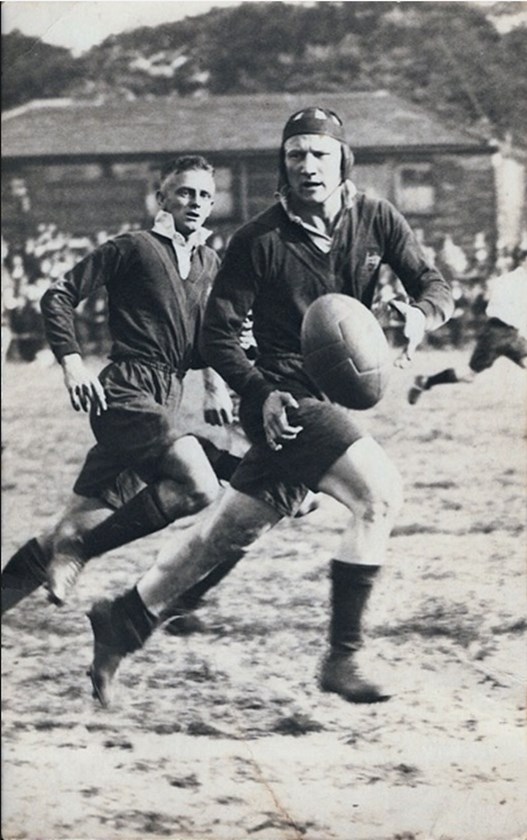
Senior Club Official Johnny Quinlan said Thicknesse “is one of the best Club men Easts have ever had, and one of the greatest players the district has produced" following his final season in 1937.
Thicknesse was induced into the Australian Rugby League Hall of Fame in 2008 and aptly recognised for his ability with selection into the Roosters Team of the 20th Century.
Andrew McLaren Norval
Described by Dick Dunn as the best player he ever saw, Andy Norval – Sydney Rooster #234 – was an athlete of outstanding versatility, featuring on the wing and at lock across 106 games for the Eastern Suburbs.
Born in South Australia, Norval played Australian Rules Football before taking up Rugby League. He played an essential role in Easts’ sides that swept the competition in 1935, 1936 and 1937, also claiming a Premiership in 1940.
Norval features in the Sydney Roosters Centurions and Team of the 20th Century at Lock and was inducted into the Australian Rugby League Hall of Fame in 2008.
Wally Patrick O’Connell OAM
Eastern Suburbs junior and Sydney Rooster #280, Wally O’Connell, played a total of 88 first grade games for the Club from 1942-1948, featuring at five-eighth and halfback.
The Sydney Roosters Life Member captain-coached Manly before retiring to commence a media career calling rugby league on a local Sydney Radio.
O’Connell was awarded the Order of Australia Medal in 2004 for his “service to rugby league football, particularly as a player and coach.”
Era 2: 1947 – Present
To be eligible for selection for Era 2, players must have featured in a minimum of 100 First Grade games for Easts between 1947 and 2023 and be retired for a minimum of five years.
Barry ‘Bunny’ Reilly
A Paddington Colts junior, Barry ‘Bunny’ Reilly quickly rose through the grades to make his first-grade debut with the Club as Sydney Rooster #570 in 1966.
Reilly is regarded as one of the toughest players to have ever donned the famous Red, White and Blue, leaving his mark on the Club as a pint-sized dynamo who could match it with players twice his size.
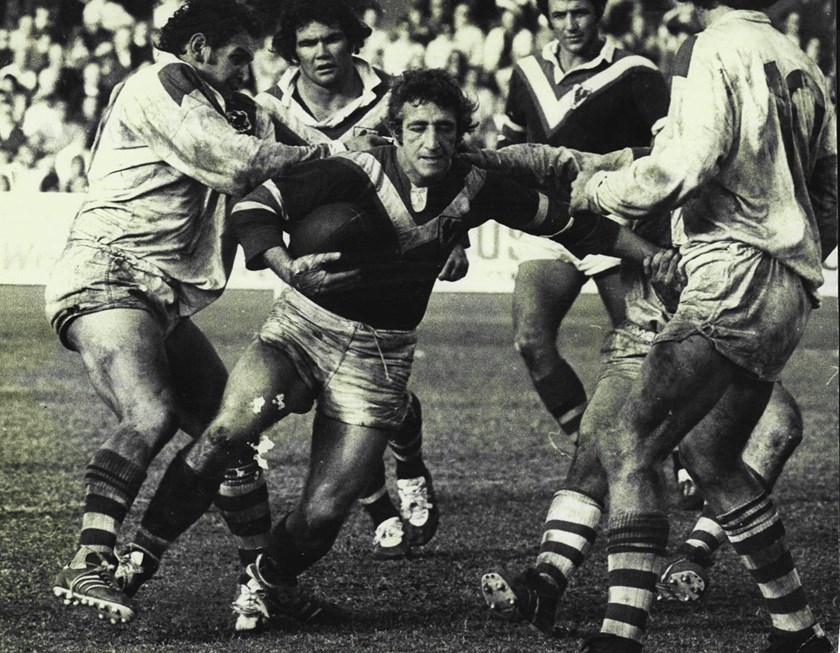
A prominent figure in Easts’ drought-breaking 1974 Premiership, Reilly played a total of 198 first-grade games for the Club. He featured in the inaugural World Club Challenge against St Helens in 1976, helping the Tricolours claim their third major trophy in as many years with a 25-2 victory.
A loyal Clubman, Reilly was awarded Life Membership before coaching the Roosters lower grades. He took up an interim head coaching role in mid-1990, guiding the side out of a form slump with a 26-14 victory over Wests in what was a brief reversal of fortunes.
Reilly was named in the Sydney Roosters Centurions and Roosters Team of the 20th Century as a bench player.
Bill Mullins
Sydney Rooster #587, Bill Mullins, was a prolific try-scorer who played a total of 190 first grade games for the Club between 1968 and 1978.
The first Roosters’ player to ever score more than 100 tries for the Club, Mullins’ towering height and sheer strength helped the Tricolours to back-to-back Premierships in 1974 and 1975.
He was recognised for his talent with selection in the Sydney Roosters Centurions and Roosters Team of the 20th Century as a winger.
John Brass
John Brass became Sydney Rooster #595 in 1969 after switching from Rugby Union.
A classy centre renowned for his slick handling skills and rock-solid defence, Brass played 143 first grade games for the Club, notably kicking two goals in Easts’ 1974 Grand Final and scoring a double in the 1975 decider to steer the Tricolours to consecutive Premierships.
Brass kicked five goals in the inaugural World Club Challenge match against St Helens in 1976 at the Sydney Cricket Ground before departing the Club to captain-coach the Tweed Heads Seagulls.
He concluded his decorated career with a total of 293 goals and 17 field goals, earning selection into the Sydney Roosters Centurions at centre. Brass served on the Super League, then the NRL, board until 2005.
Mark Walter Harris
Mark Harris, Sydney Rooster #608, revolutionised the role of a damaging ball-running centre in the 195 first grade games he played for the Club.
One of the most unique finds in Easts’ history, Harris was convinced to don the Red, White and Blue in 1970 after a two-year stint in Papua New Guinea with the Kone Tigers.
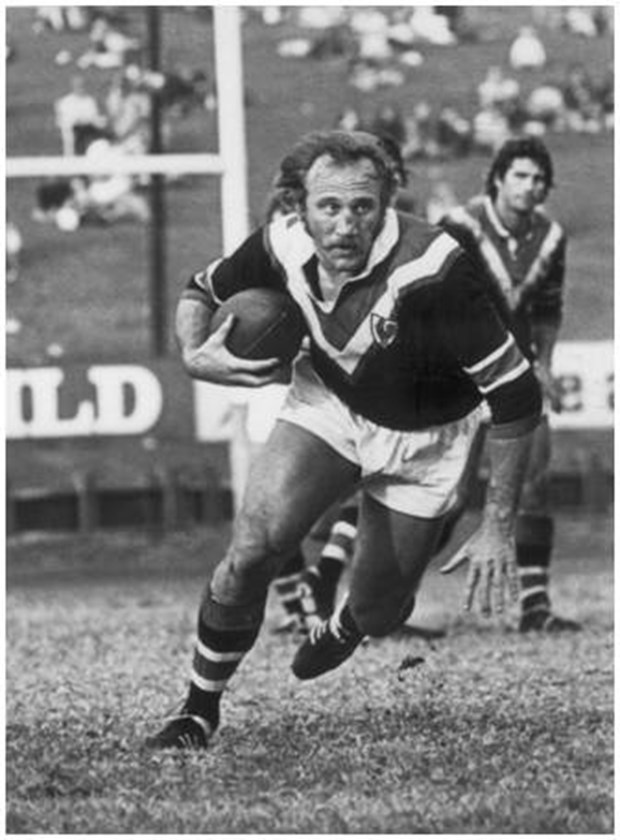
Harris propelled the Tricolours to the 1972 Grand Final, leaving defenders in his wake, running off silky passes. He scored the match-sealer in the Club’s 1974 Premiership victory over Canterbury-Bankstown.
His longevity and passion for the Club saw him finish his career in Bondi as the second most-capped Rooster alongside Barry Reilly at the completion of his tenth season in 1979. Harris’ list of accolades includes the Channel 9 Rookie of the Year (1970), the Sun-Herald Player of the Year (1972) and Sydney Roosters Centurions Centre.
Russell Lance Fairfax
Russell Fairfax made his debut as Sydney Rooster #639 in 1974, scoring nine tries in 22 appearances and lifting the Premiership trophy in his first year at top level.
The fast-paced fullback totalled 115 games for the Club in his six-year stint, earning selection into the Roosters Team of the 20th Century at fullback.
Fairfax returned to Easts in 1989, taking up a role as Head Coach. He led the Club for a total of 36 games, before retiring to take up a career as a Sports Reporter.
Hugh Joseph McGahan
Auckland-born Hugh McGahan joined Easts in 1985, making his debut as Sydney Rooster #781 in the second row against South Sydney on March 17 at the Sydney Sports Ground.
The proud New-Zealander captained the Kiwis in 17 tests while at the Club, co-receiving the Golden Boot Award and Dally M Second Rower of the Year in 1987. His impressive form continued, taking the Captaincy role in the late 1980s before being awarded the Roosters’ Player of the Year in 1990.
McGahan retired from the game at the end of the 1991 season, but later worked in an administrative capacity with the Club. He was inducted into the Kiwi Legends of League in 1995.
Craig Salvatori
Craig Salvatori, Sydney Rooster #805, played 117 first grade games for the Club between 1986 and 1995 as a hard-hitting and fiery front-row forward.
The local junior was awarded the Dally M Prop of the Year in 1991, a year in which he scored six tries and kicked four goals.
Salvatori featured in two Australian tests and five State of Origin matches for NSW before taking up a coaching role with the Italian team in the World Sevens competition and the Mediterranean Cup competition in France in 1999.
Luke Douglas Ricketson
Sydney Rooster #884, Luke Ricketson, epitomised the Club’s professionalism and transition into the 21st century after making his debut in 1991.
Ricketson began his career as a talented centre before being shifted into the engine room by coach Phil Gould. He featured in a total of 301 first grade matches for Easts and was aptly awarded the Jack Gibson Medal in 1997.
His persistence with the Tricolours was rewarded with State of Origin selection for New South Wales in 1999, before steering the Club to the Grand Final in Season 2000 – their first decider in two decades.
In one of the most courageous and unheralded performances in a Grand Final, Ricketson fought through over 50 minutes of play with a torn hamstring to lift the Premiership trophy aloft in 2002.
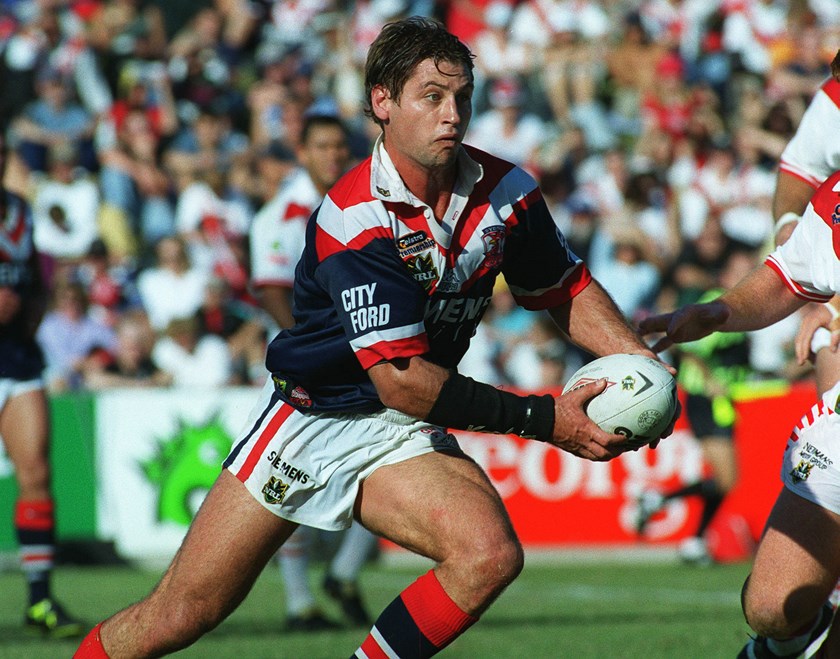
Awarded Sydney Roosters life membership in 2003, Ricketson retired from the game in 2005 as the most-capped Rooster on 301 games, the first person to reach the 300 Game Milestone for the Club. His talent was recognised with selection into the Sydney Roosters Centurions as a bench player in 2007.
Ricketson has been a member of the Roosters’ Board of Directors since 2010.
Craig Fitzgibbon
Craig Fitzgibbon, Sydney Rooster #989 made his debut as a budding back-rower hungry for success.
He played 228 first grade games for the Club from 2000-2009, claiming the Premiership, Clive Churchill and Jack Gibson Medals in just his third season in the Red, White and Blue.
Renowned for his leadership, Fitzgibbon received the Dally M Representative Player of the Year Award and the Wally Lewis Medal in 2004 after working tirelessly at Club, State and International level for his respective teams.
Fitzgibbon eclipsed David Furner’s title as the highest point-scoring forward in NRL history, a record which stood for nearly a decade.
The four-time Jack Gibson Medal Winner and well-loved Club figure transitioned into a coaching role following his retirement, becoming Trent Robinson’s right-hand man to help the Roosters achieve a further three premierships in 2013, 2018 and 2019.
He was named in the Sydney Roosters Centurions as a bench player and was awarded Life Membership to the Club in 2021.
Craig Wing
Craig Wing made the move from South Sydney to the Tricolours in 2000, becoming Sydney Rooster #990 when he debuted against the Parramatta Eels at fullback in Round 1.
Wing played various positions in the spine for the Club throughout his 185 first-grade games. He started at fullback before partnering Brad Fittler in the halves, eventually transitioning to hooker in 2003.
Known for his tight passing game and speed around the ruck, Wing played 17 tests for Australia and represented NSW in the Origin arena 12 times, 10 while at the Club.
Anthony Minichiello
Drafted into the SG Ball side at the age of 16, Anthony Minichiello rose through the Club’s ranks at a rapid pace, making his NRL debut on the wing as Sydney Rooster #994 in Round 4 of the 2000 season.
Minichiello’s dominant form would continue in the two seasons that followed, but it was his move to fullback in 2003 which would see the Italian International’s game go to the next level.
In his 302 first grade games across his 14-year career, the dynamic and unpredictable ball-runner featured in six Grand Finals and recorded 139 NRL tries, retiring as the Club’s most-capped player and highest all-time try-scorer.
Named in the Roosters Centurions as fullback, Minichiello is still involved with the Club, passionately teaching players about the importance of nutrition and dietary plans.
Adrian Morley
Born in Salford in Greater Manchester, Adrian Morley joined the Sydney Roosters following seven seasons with Leeds and a World Cup campaign with England.
He became Sydney Rooster #999 in February of 2001, debuting in the second row against the Wests Tigers. Morley quickly adapted to the Australian competition and made a reputation for himself as a strong defender and fearless carrier of the ball.
The three-time Grand Finalist took home the Jack Gibson Medal in 2003 and played 19 of his 30 test matches for Great Britain while at the Roosters.
